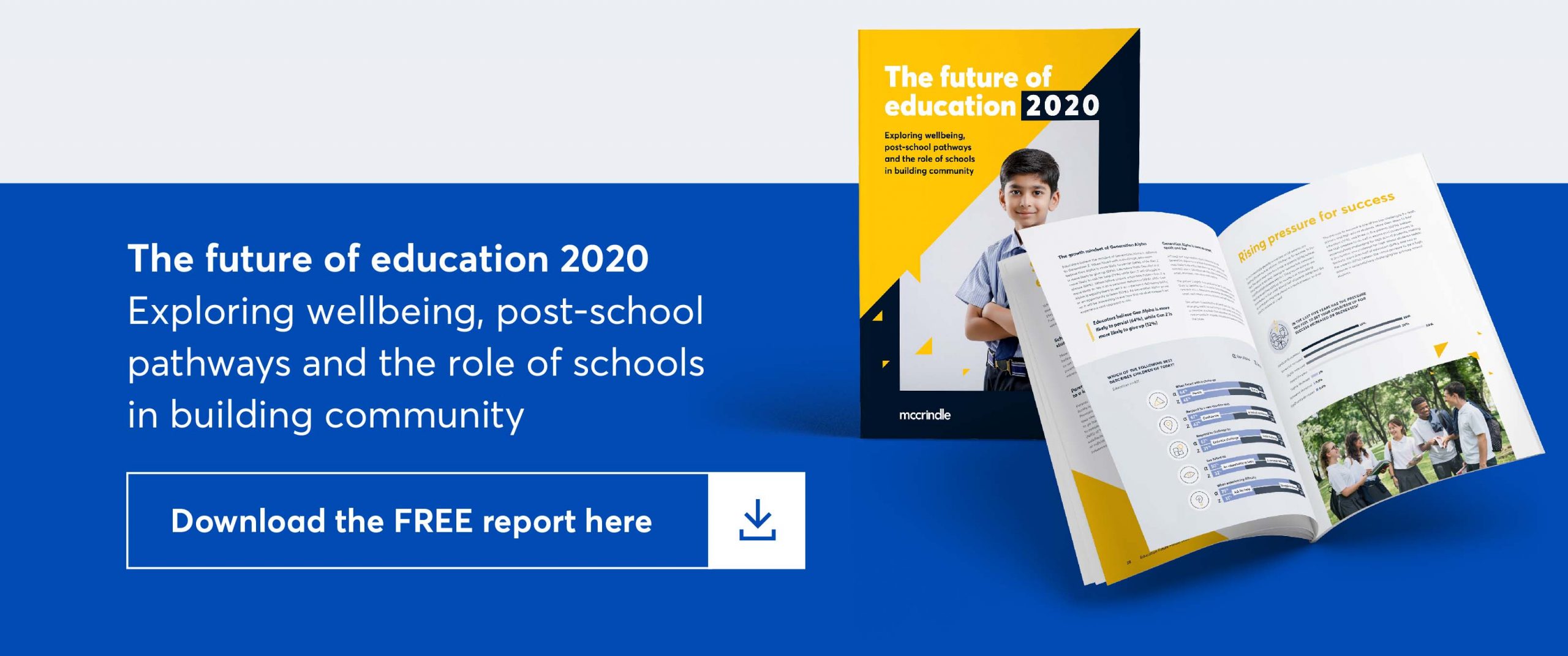By: McCrindle
The transition from being a student into the turbulence of the workforce is a significant milestone in a young person’s life.
It signifies the beginning of newfound independence and responsibility, which can be exciting and overwhelming for some. For most students, the trajectory of their life after formal education will be to enter the workforce. Yet there seems to be an increasing disconnect between what students are being prepared for and what the workforce expects of them. The question remains, how well are formal education institutions preparing students for a job in the future?
The parent perspective
The answer to that question remains unclear as of now, but a significant proportion of Australians are concerned about the way the education system is preparing students for the workforce. Two in five parents/guardians (39%) are dissatisfied with the way their children are being prepared for a job in the future.1
On the flipside, an equal proportion of parents/guardians are satisfied with how the system is preparing their children to be job ready. Although the proportion of satisfied and dissatisfied is equal, there is a gap between the expectations that parents have for the education system to ready students for jobs and what the education system is currently delivering.
The student perspective
Students across the world (16-23 years) think that schools are good at job preparation (41%). A further 33% think it is adequate while only 16% think schools are excellent at preparing them for the workforce. A large majority of young people aged between 16-23 (94%) have concerns about starting work. For almost half of these young people (45%), the main concern is that employers are looking for people with work experience, but they cannot get that without working first.2
A full-time job provides the opportunity for a graduate to apply the skills and knowledge which they have acquired throughout their education. Yet, many graduates are working in jobs which do not optimally utilise their education and skill set. In 2018, 27% of graduates were in a full-time role that did not fully utilise their knowledge and skills. There are longer term consequences, such as underemployment, if these graduates are unable to find employment that match their level of education.3
1 ABC, Australia Talks, 2020
2 Dell Technologies, Gen Z: The future has arrived, 2018
3 Pennington, A & Stanford, J, The Future of Work for Australian Graduates: The Changing Landscape of University Employment Transitions in Australia, The Australia Institute Centre for Future Work, 2019
Article supplied with thanks to McCrindle.
About the Author: McCrindle are a team of researchers and communications specialists who discover insights, and tell the story of Australians – what we do, and who we are.
Feature image: Photo by Brooke Cagle on Unsplash

